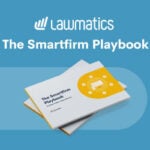5 Steps To ESG-Ready Supplier Agreements
Updating contracts can feel like a daunting prospect for in-house legal departments. You will need a plan, a methodical process, and some tools.
 Environmental, Social, and Governance (ESG) standards are becoming a critical part of supplier agreements. New regulations such as the EU’s Corporate Sustainability Reporting Directive (CSRD) and California’s Corporate Data Accountability Act (CCDAA) will soon require medium-size and large companies to report on their suppliers’ carbon footprint and other sustainability metrics. Reporting companies must collect this data from suppliers — which means adding reporting requirements to supplier agreements.
Environmental, Social, and Governance (ESG) standards are becoming a critical part of supplier agreements. New regulations such as the EU’s Corporate Sustainability Reporting Directive (CSRD) and California’s Corporate Data Accountability Act (CCDAA) will soon require medium-size and large companies to report on their suppliers’ carbon footprint and other sustainability metrics. Reporting companies must collect this data from suppliers — which means adding reporting requirements to supplier agreements.
Updating contracts can feel like a daunting prospect for in-house legal departments. You will need a plan, a methodical process, and some tools. The five steps below will give you a roadmap to get started.
One note before you begin — as you are making your plan of action, be sure to consider the burden on suppliers. Focus on the suppliers who are likely to have a material impact based on your spending, the product type, and the industry. It may seem easier to just send the same requests to everyone — but chasing and managing the data from all your suppliers will take more time in the long run than sorting out the suppliers that truly matter for these purposes. And overburdening suppliers will negatively impact small and diverse businesses.

How to Achieve Quicker, More Valuable Case Settlements with Minimal Effort: A Guide for Personal Injury Lawyers
With that said, let’s get started!
Step 1: Define ESG Standards For Supplier Agreements
Defining ESG standards for suppliers is the first step. You may already have standards for things like health and safety, human rights, and labor rights. If you will be subject to the CSRD, you will need to ensure your existing standards meet your reporting requirements across subjects and add new environmental requirements. If you are subject to the CSRD or the CCDDA, creating standards for the provision of carbon data will be critical. The standards you set will be the foundation for your ESG-ready agreements.
Step 2: Review Supplier Agreements Against ESG Standards
Sponsored

How to Achieve Quicker, More Valuable Case Settlements with Minimal Effort: A Guide for Personal Injury Lawyers

LawPay Pro Offers Upgraded Time And Billing Essentials

The Smartfirm Playbook - Thriving In Today’s Legal Landscape

How Generative AI Is Disrupting Law Firm Billing Practices
After defining your ESG standards, the next step is to review your existing supplier agreements. Flag the supplier agreements that may involve material ESG risks (see comment above) and assess these agreements for compliance against your newly defined standards.
This step will be much easier if you already have your supplier agreements in one place that is searchable using contract lifecycle management software. Should you not be so lucky, upgrading your contracts for ESG requirements is a great launch point for a CLM project.
Step 3: Remediate ESG Gaps In Material Supplier Agreements
Once you have identified the relevant pool of contracts and scoped the gaps, it’s time to start remediation. Hopefully, you will be able to do this with a simple amendment. But the process could involve renegotiating agreements with major suppliers, revising terms, or even seeking new suppliers that better align with your ESG standards. Give yourself time for this step.
Step 4: Track Progress
Sponsored

How Generative AI Is Disrupting Law Firm Billing Practices

InterAction+ Brings Power Of CRM Software To Law Firms Of All Sizes
Just identifying and remediating the ESG gaps isn’t enough. You need to be able to track your progress against the goals. This will help ensure your project meets its targets. In addition, having data on the ESG provisions in your supplier agreements is one way to show that your company is taking proactive steps to improve its ESG performance.
Step 5: Build ESG Provisions Into New Contracts
The final step toward ESG-ready supplier agreements is to build your new ESG standards into your contract drafting process. It would be best to start this work at the same time as Step 2. Doing this will help reduce the number of contracts that need to be remediated.
Hint: As you build your new provisions, the best place to look for template climate provisions is The Chancery Lane Project.
In-house legal teams will not be able to tackle this challenge on their own. Strong support will be needed from procurement, compliance, and operations. Although the new regulations have not yet come into effect, it’s better to start now. Incorporating new provisions into an existing contract base takes time, and alerting suppliers early will help make the transition easier for everyone.
 Christine Uri is a Top 100 Voice in Sustainability. She advises general counsel on the development and implementation of environmental, social, and governance (ESG) programs. As a former Chief Legal Officer and Chief Sustainability Officer for a global sustainability company, Christine knows what it takes to move ESG to the top of the corporate agenda. Christine believes that improving corporate performance on ESG measures is critical to building a more sustainable world. She is passionate about inspiring and empowering in-house legal teams to provide ESG leadership. You can follow Christine on LinkedIn.
Christine Uri is a Top 100 Voice in Sustainability. She advises general counsel on the development and implementation of environmental, social, and governance (ESG) programs. As a former Chief Legal Officer and Chief Sustainability Officer for a global sustainability company, Christine knows what it takes to move ESG to the top of the corporate agenda. Christine believes that improving corporate performance on ESG measures is critical to building a more sustainable world. She is passionate about inspiring and empowering in-house legal teams to provide ESG leadership. You can follow Christine on LinkedIn.







